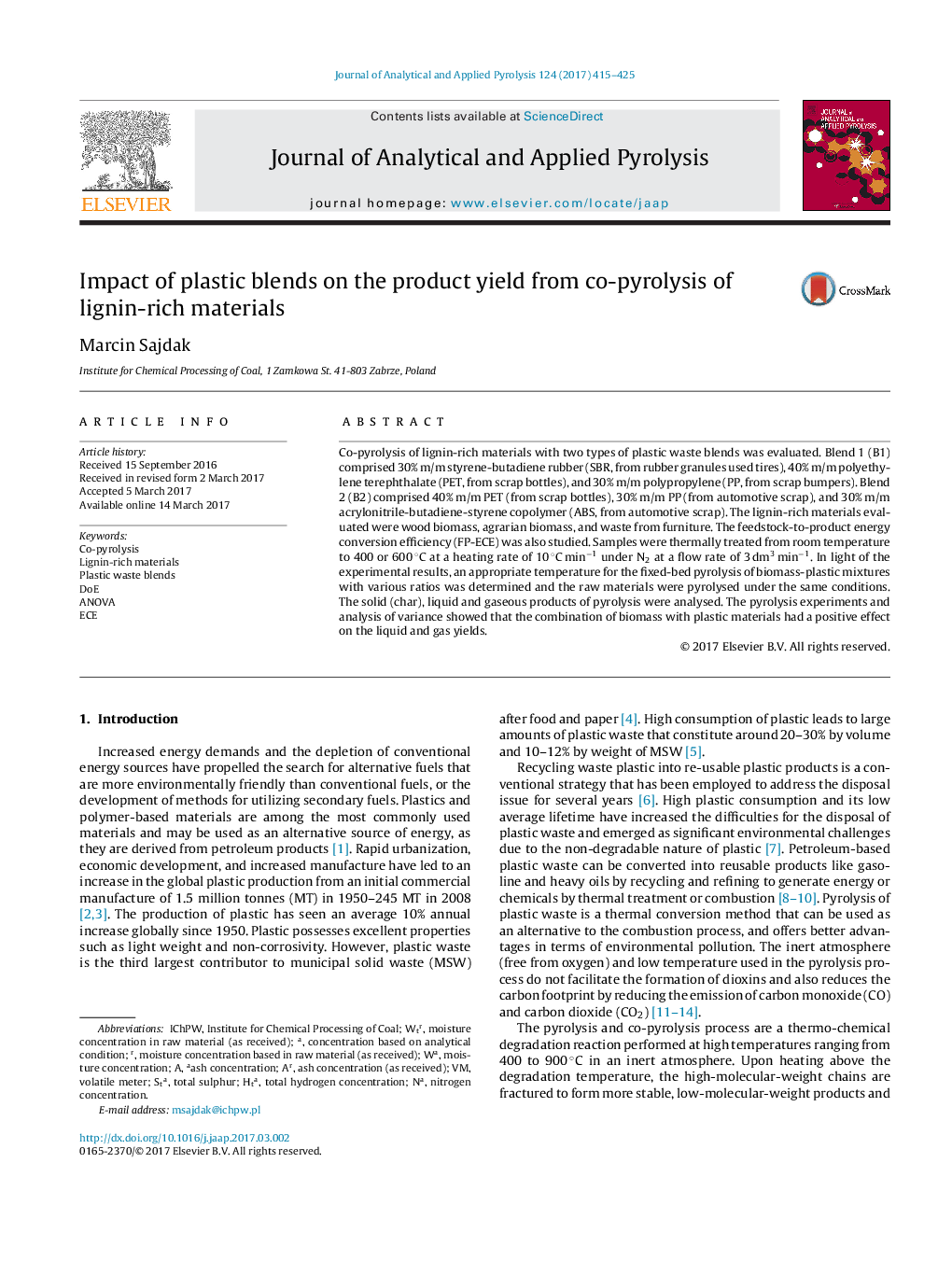| Article ID | Journal | Published Year | Pages | File Type |
|---|---|---|---|---|
| 5134614 | Journal of Analytical and Applied Pyrolysis | 2017 | 11 Pages |
â¢Lignin-rich materials were co-pyrolysed with waste plastic blends.â¢The feedstock-to-product energy conversion efficiency (FP-ECE) was determined.â¢DoE & ANOVA showed influence between biomass & plastic in TC process.
Co-pyrolysis of lignin-rich materials with two types of plastic waste blends was evaluated. Blend 1 (B1) comprised 30% m/m styrene-butadiene rubber (SBR, from rubber granules used tires), 40% m/m polyethylene terephthalate (PET, from scrap bottles), and 30% m/m polypropylene (PP, from scrap bumpers). Blend 2 (B2) comprised 40% m/m PET (from scrap bottles), 30% m/m PP (from automotive scrap), and 30% m/m acrylonitrile-butadiene-styrene copolymer (ABS, from automotive scrap). The lignin-rich materials evaluated were wood biomass, agrarian biomass, and waste from furniture. The feedstock-to-product energy conversion efficiency (FP-ECE) was also studied. Samples were thermally treated from room temperature to 400 or 600 °C at a heating rate of 10 °C minâ1 under N2 at a flow rate of 3 dm3 minâ1. In light of the experimental results, an appropriate temperature for the fixed-bed pyrolysis of biomass-plastic mixtures with various ratios was determined and the raw materials were pyrolysed under the same conditions. The solid (char), liquid and gaseous products of pyrolysis were analysed. The pyrolysis experiments and analysis of variance showed that the combination of biomass with plastic materials had a positive effect on the liquid and gas yields.
